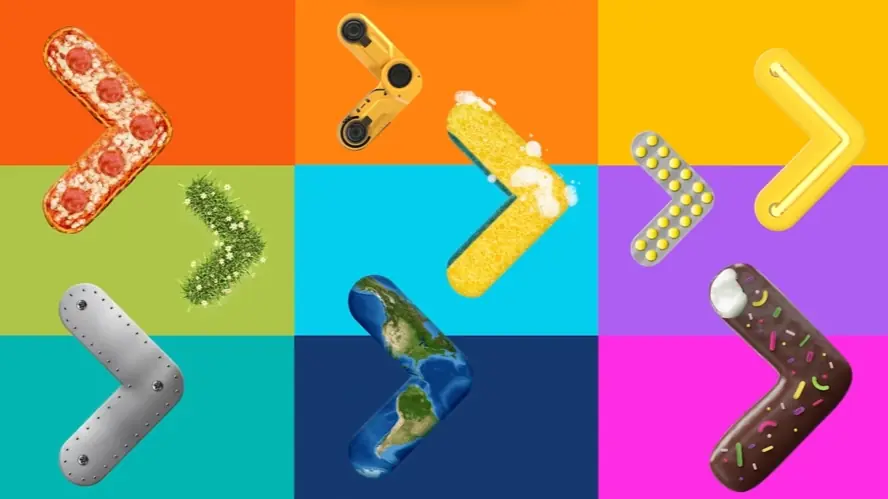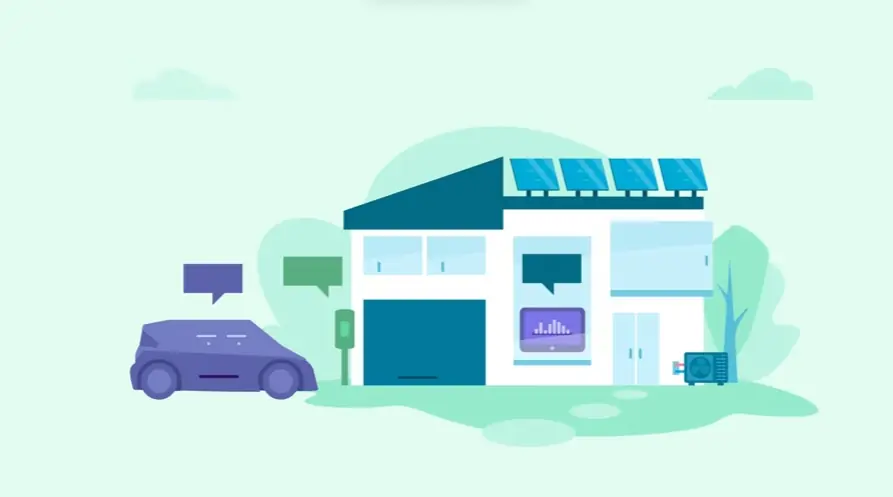Ever wondered how to truly simplify complexity? Consider the sheer impact of visuals in today's fast-paced world. For businesses aiming to educate and engage, 3D animation how to examples offer a powerful solution. They transform intricate product features into easily digestible visual stories.
These examples are more than just eye-catching; they are strategic assets for fostering customer understanding and driving business growth. Let's dive into how these captivating 3D animations can revolutionize your user education strategy and boost conversions.
It’s crucial to plan ahead when it comes to high-quality video production. Discuss with our team, how you can get visual style, budget, timeline in sync.
Jai Ghosh
Video Producer at Advids
Let's talk

How to design effective 3D animation?
Effective 3D animation design starts by crafting a compelling story that resonates with viewers. They meticulously plan narratives to guide every visual element ensuring audience engagement. Clarity is paramount so they prioritize visual communication making complex ideas instantly understandable. Emotional impact is key they carefully consider how animation evokes feelings creating lasting connections.
How is 3D animation production done?
3D animation production is a detailed journey from initial concept to final polished render. They begin by developing strong concepts and storyboards as blueprints. Modeling artists then sculpt digital assets while rigging specialists create skeletons for movement. Animators breathe life into characters and scenes. Rendering transforms 3D scenes into 2D images and compositing refines the final visual output ensuring a cohesive and professional look.
How to use 3D animation in marketing?
3D animation powerfully elevates marketing strategies by vividly showcasing product value. They use animations to dynamically highlight key features and benefits captivating potential customers far beyond static images. These engaging visuals significantly boost brand recognition creating memorable marketing experiences that resonate deeply and drive conversions.
Where can 3D animation be applied?
3D animation's reach extends far beyond entertainment opening doors across diverse sectors. They apply it in education to simplify complex learning making abstract concepts tangible. Medicine utilizes it for detailed anatomical visualizations aiding understanding and patient communication. Architecture employs it for immersive design previews allowing clients to experience spaces virtually. Product demonstrations become exceptionally engaging transforming presentations into dynamic visual stories.
How to demonstrate products with animation?
To effectively demonstrate products with animation they prioritize absolute clarity and visual impact. They expertly use techniques like exploded views to reveal intricate inner workings and mechanisms. Feature animations dynamically spotlight key selling points in visually compelling ways ensuring viewers instantly grasp product advantages and unique selling propositions.
What makes a good 3D animation intro?
Exceptional 3D animation intros are characterized by brevity visual dynamism and strong brand alignment. They understand the need to quickly capture viewer attention within seconds establishing brand identity instantly. Intros are carefully crafted to set the perfect tone for the content that follows creating a powerful and memorable first impression.
How does 3D animation process work?
The 3D animation process is inherently iterative demanding a cycle of creation feedback and refinement. They embrace revisions as crucial steps to elevate animation quality ensuring the final output surpasses initial expectations. This collaborative approach involving client input and internal reviews guarantees the animation effectively achieves its intended purpose and resonates with the target audience.
What is involved in learning 3D animation?
Learning 3D animation is best approached by breaking down the craft into manageable skill sets. They recommend aspiring animators begin by mastering core principles such as fundamental modeling techniques and animation basics. Gradually they advise progressing to more complex specialized areas like character rigging advanced rendering techniques and visual effects building a robust and versatile skillset.
How to ensure animation clarity?
Achieving animation clarity hinges on prioritizing simple and direct visual communication. They consciously avoid unnecessary visual complexity focusing instead on conveying clear and concise messaging. Unessential details are deliberately omitted ensuring viewers effortlessly grasp the intended message without distraction or confusion maximizing comprehension and impact.
Key elements for animation success?
Key elements that consistently drive animation success include compelling and emotionally resonant visuals coupled with engaging narratives. They expertly balance artistic creativity with precise technical execution recognizing that both aspects are equally vital. Effective storytelling interwoven with strong visual appeal and flawless technical delivery are the cornerstones of truly successful and impactful animations.
How to Master Character Animation Basics Quickly
So you are eager to jump into character animation? Fantastic! It might seem daunting, but mastering the basics quickly is absolutely achievable if we focus our energy smartly. Forget complex rigs and intricate scenes for now. Our starting point is much simpler, and trust us, incredibly effective for building a solid foundation.
Think of character animation as bringing simple shapes to life. We begin there, mastering how basic forms move and interact. Key poses are our next essential focus. These are the strong, defining moments in any animation, the anchors of our character's performance. Understanding timing and spacing is the rhythm of animation, the secret sauce that makes movement believable and engaging.
Ready for some actionable steps? Let's get moving!
- Start with simple shapes. Boxes, spheres, cylinders – these are your building blocks.
- Master key poses. Sketch them, sculpt them, really understand the silhouette and weight.
- Understand timing and spacing. Experiment with slow-ins, slow-outs, and consistent speeds.
- Practice the walk cycle. It's a fundamental exercise that teaches weight shift and rhythm.
To truly accelerate our learning, immerse ourselves in resources. Watch a 3d animation process video to understand the workflow. Dive into 3d animation tutorial video series for step-by-step guidance. And as we progress, creating a 3D animation intro video or even a short 3d animation demo video will solidify our skills and showcase our growing talent. Let's make those characters move!
What 3D Modeling Software Should Beginners Use
So you are ready to dive into creating your own 3D animation how tos, fantastic! The next logical step is choosing the right 3D modeling software to bring your ideas to life. For beginners, this choice can feel overwhelming, but dont worry, we are here to guide you through it. The key is to find software that is both powerful enough to create compelling visuals and user-friendly enough to learn without frustration.
Think about what kind of 3D animation how to you envision. Are you leaning towards a 3d animation explainer video to simplify a complex product, or perhaps a 3d animation walkthrough video to showcase features in detail? Your video goal will influence your software needs. Remember, many excellent options cater specifically to beginners, offering intuitive interfaces and helpful learning resources. Lets explore some crucial factors to consider when making your choice.
- Ease of Use Look for software with a beginner-friendly interface and readily available tutorials. A steep learning curve can quickly dampen your creative spirit.
- Cost Many free or affordable options exist for beginners. Start with these to minimize initial investment while you learn the ropes.
- Community Support A strong online community means readily available help, tutorials, and inspiration. This is invaluable when you are starting out.
- Features While beginner-friendly is key, ensure the software offers enough features to grow with your skills and handle various 3d animation demo video Idea you might have.
Choosing the right software is a personal journey. Experiment with free trials, watch introductory tutorials, and see what feels most comfortable and inspiring for your 3D animation intro video Idea and beyond. The perfect software is out there to help you create amazing 3D animation how tos.
How to Effectively Texture Your 3D Models
Analyze how effectively texture 3D models. Texturing is not just about adding color its about breathing life into your 3D creations especially vital for engaging 3D animation how tos. Imagine presenting product features in flat untextured grey. Textures provide crucial visual cues depth realism instantly enhancing viewer understanding product functionality. A well textured model elevates a simple 3d animation demo video sample into a captivating visual experience.
Consider how texture impacts visual storytelling. Texture choice profoundly dictates model feel and viewer perception. Rough textures might convey durability or ruggedness while smooth polished textures suggest elegance or sophistication. For compelling 3D animation intro video ideas texture becomes your initial hook setting the tone right from the start. Stylized textures perfectly complement playful demos whereas realistic textures lend credibility to technical tutorials. Balancing style and purpose is key for effective visual communication. Explore a 3d animation demo video example and notice how subtle texture nuances contribute to the overall message and impact.
- Texture resolution directly impacts visual clarity ensure details remain crisp even close up.
- UV unwrapping is fundamental for seamless texture application think of it as unfolding model skin for painting.
- Layering textures adds depth and visual interest creating richer more believable surfaces.
- Lighting dynamically interacts textures creating depth and realism observe how shadows and highlights play across textured surfaces.
Effective texturing ultimately transforms basic 3D models into visually rich engaging assets. Mastering these techniques significantly enhances your 3D animation how tos making them not just informative but also visually compelling and truly memorable. When brainstorming 3d animation demo video ideas remember texture is your powerful ally in unlocking animation potential.
Simple Guide Lighting 3D Scenes Like a Pro
Lighting is absolutely crucial in 3D animation. It sets the mood, guides the viewer's eye, and adds depth and realism to your scenes. Think of it as the storytelling spotlight, illuminating what's important and creating visual interest. Getting lighting right can elevate your 3D animation how tos from good to great.
Let's explore some key lighting concepts to help you light your 3D scenes like a pro.
- Key Light This is your main light source, the sun of your scene. It establishes the dominant light and casts the primary shadows.
- Fill Light Softening the shadows created by the key light is the fill light's job. It's less intense and helps reveal details in darker areas.
- Backlight Separating your subject from the background, backlight creates a subtle rim of light around the edges, adding dimension.
- Shadows Don't underestimate shadows. They define shapes, create depth, and ground objects in your 3D world. Experiment with soft and hard shadows for different effects.
With these basic principles, we can start crafting visually compelling 3D animation how tos. Remember, lighting is an iterative process. Don't be afraid to experiment and adjust until you achieve the desired look and feel for your video. Looking at a 3D animation intro video Sample can give you great ideas. Consider how light directs the viewer's eye in a 3D animation intro video Example. When brainstorming a 3d animation process video Idea, lighting should be a key consideration from the start. Analyze 3d animation demo video Samples to see how lighting draws attention to key product details. Mastering lighting is a game changer for your 3D animation journey.
Rendering Animation Output For Different Platforms
Rendering animation output for different platforms is essential for maximum viewer engagement. After investing in creating compelling 3D animation how tos, ensuring they look fantastic everywhere is next crucial step. Think about 3d animation demo video Examples viewed across countless devices. Our animations need to shine whether someone is watching on a crisp desktop or a mobile phone on the go. Platform specific rendering bridges this gap guaranteeing consistent quality.
We must consider diverse viewing habits. Someone watching 3D animation intro video Samples expects immediate visual impact. Another seeking 3d animation tutorial video Idea needs clarity on any device. And for 3d animation process video Ideas, the entire workflow including output, must be seamless. Each platform presents unique challenges and opportunities. Optimizing rendering is how we meet these head on.
- Prioritize resolution based on primary viewing platform.
- Adapt aspect ratios for vertical horizontal square formats.
- Choose file formats optimized for web mobile presentations.
- Utilize smart compression for fast loading without sacrificing quality.
By mastering platform specific rendering we ensure our 3D animation how tos not only inform but also impress. It is about respecting viewer experience and making sure our animations deliver their intended impact regardless of where they are watched.
Storyboarding 3D Animation A Step By Step Approach
Storyboarding 3D animation might seem like an extra step, but trust us, it is the backbone of a successful video. Think of it as our blueprint, guiding us from initial concept to final render. Without a solid storyboard, even the most brilliant 3d animation explainer video idea can lose its way. Whether we are crafting 3D animation intro video examples or something more complex, this visual roadmap keeps everyone aligned and ensures our message hits home.
Let us break down the essential steps we take when storyboarding.
- First, we pinpoint the video's core purpose. Is it to introduce, explain, or perhaps demonstrate a process? Understanding this upfront shapes our entire approach.
- Next, we visualize the narrative flow. For 3d animation tutorial video ideas, a storyboard ensures a logical step by step progression, keeping viewers engaged and informed.
- Then comes sketching key scenes. These visual thumbnails are not about artistic perfection, but about capturing the essence of each moment and camera angle.
- Finally, we add scene notes. Brief descriptions under each sketch clarify actions, dialogue, and any crucial visual details, even for a seemingly simple 3d animation process video sample.
By meticulously planning each scene through storyboarding, we not only streamline the animation process but also amplify the video's impact. This structured approach allows us to create compelling 3D animation how tos that truly resonate and deliver results.
How to Achieve Realistic Movement in 3D Animation
Achieving truly captivating 3D animation how tos hinges on believable movement. Beyond just showcasing features, realistic animation grabs attention and holds it, making your message resonate. We've explored the power of 3D animation how tos, now let's delve into making those animations truly come alive.
To inject realism, consider these key aspects.
- Study real world motion. Observe how things move around you. A simple 3d animation process video example showcasing natural movement can be incredibly insightful. Notice the subtle shifts in weight, the way objects react to forces, and the nuances of human or animal locomotion.
- Understand principles physics. Even stylized animation benefits from a grounding in physics. Think about gravity, inertia, and momentum. For 3d animation explainer video ideas, consider how physics principles can clarify complex processes through visually accurate motion.
- Use proper timing spacing. Timing and spacing are the heartbeat of animation. Watch a 3d animation tutorial video sample focusing on these elements. Mastering the subtle art of frame-by-frame control dictates the perceived speed and weight of your animated elements.
- Incorporate anticipation reaction. Anticipation prepares the viewer for an action, while reaction shows the consequence. For 3d animation process video samples demonstrating impact, observe how anticipation and reaction amplify the sense of weight and force.
By focusing on these core principles, we can elevate our 3D animation how tos from simply informative to genuinely engaging and impactful. Realistic movement is not just about technical accuracy; it's about creating a connection with your audience through believable and captivating visuals.
Understanding the Complete 3D Animation Workflow
Creating effective 3d animation explainer video sample is a journey, and we want to give you a peek behind the curtain. It's more than just pushing buttons; it's a collaborative and creative flow. Let's walk through how we typically bring a 3d animation walkthrough video idea to life, step by step.
First, everything begins with concept development. Imagine we're crafting a 3d animation tutorial video example. We start by brainstorming and really refining the core idea, ensuring it perfectly aligns with the video's goals. Then comes the crucial scriptwriting and storyboarding phase. This is where the narrative takes shape; we visualize each scene, planning the visual story we want to tell.
Next, the production engine kicks in. Our talented team dives into 3D modeling and asset creation, building all the visual elements from products to environments. We then meticulously apply textures and materials, adding depth and realism to those models. If characters are involved, rigging and character setup are essential to prepare them for animation. Animation and motion design is where the real magic happens – we breathe life into these digital creations, adding movement and personality. Lighting and rendering techniques are carefully considered to achieve the desired visual style and polish. Often, visual effects or VFX integration can elevate the video, especially when explaining complex features.
Sound design and music composition are vital for creating an immersive experience, and a clear voiceover recording and integration guides viewers seamlessly through the how to steps. Finally, compositing and final assembly bring all these elements together. Throughout this 3d animation process video examples workflow, review and feedback iterations are key. We value client collaboration and communication, ensuring the final product truly reflects their vision. Optimization for the target platform ensures the video looks its best wherever it's viewed, and finally, we reach final delivery and asset handover.
Essential Pre Production Steps For 3D Animation
Before we jump into creating stunning visuals, lets lay a solid foundation. Effective 3D animation how-tos begin long before animation starts. Pre-production is where we define our vision and strategy.
- First, define clear objectives. What exactly do we want viewers to learn or do after watching? Think about a 3d animation explainer video example that effectively communicates a similar concept.
- Next, identify our target audience. Who are we speaking to? What are their needs and pain points? Understanding this shapes our message and style.
- Then, develop a compelling narrative outline. Storytelling is crucial. Lets brainstorm 3d animation walkthrough video ideas to map out the visual flow and keep viewers engaged.
- Finally, write a concise script. Every word counts. Keep it focused and easy to understand.
Visual style is also paramount. Review 3d animation tutorial video examples to find a style that fits your brand and message. Lets start by exploring 3d animation tutorial video samples to spark ideas and see what resonates. With these pre-production steps in place, we set ourselves up for 3D animation success.
Applying Core 3D Animation Principles Effectively
Creating effective 3D animation how tos involves more than just technical skill. It is about strategically applying core animation principles to enhance clarity and engagement. Let us explore how we can make our animations truly shine.
- Purpose Driven Animation Begin defining clear objective animation. What specific action process feature viewers understand? This clarity guides every animation decision.
- Visual Hierarchy Matters Establish visual hierarchy guiding viewers eye important elements. Use scale color contrast strategically direct attention key information.
- Simplicity Enhances Understanding Simplify 3D models focusing essential details. Overly complex models distract confuse viewers. Aim clarity not photorealism.
- Pacing for Comprehension Control animation pacing ensure viewers grasp information. Too fast viewers miss details too slow lose interest. Find optimal rhythm.
Looking at successful 3d animation explainer video examples and 3d animation walkthrough video sample, we see these principles consistently applied. By focusing on these core elements we create 3d animation explainer video examples and 3d animation walkthrough video example that are not only visually appealing but also highly effective communication tools.
Author & Editor Bio
A video producer with a passion for creating compelling video narratives, Jai Ghosh brings a wealth of experience to his role. His background in Digital Journalism and over 11 years of freelance media consulting inform his approach to video production. For the past 7 years, he has been a vital part of the Advids team, honing his expertise in video content planning, creation, and strategy.
His collaborative approach ensures that he works closely with clients, from startups to enterprises, to understand their communication goals and deliver impactful video solutions. He thrives on transforming ideas into engaging videos, whether it's a product demo, an educational explainer, or a brand story.
An avid reader of modern marketing literature, he keeps his knowledge current. Among his favorite reads from 2024 are "Balls Out Marketing" by Peter Roesler, "Give to Grow" by Mo Bunnell and "For the Culture" by Marcus Collins. His results-driven approach ensures that video content resonates with audiences and helps businesses flourish.




